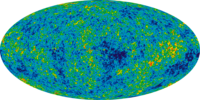Correlation function (astronomy)

Correlation function is just like playing a game of hide-and-seek in the sky! Astronomers use it to find out how close and how often different objects in the sky are hiding together.
Imagine a bunch of stars in the sky that are friends and like to hang out together. The correlation function helps us figure out how close they like to stick together and how many other stars are around. We can use this information to learn about the way galaxies form and how the universe is structured.
It's like when you play hide-and-seek with your friends. You hide with someone close by, and then you both count how many other friends are hiding with you. If you do this over and over again, you can figure out who likes to hide with who and how often they play together.
In astronomy, the correlation function is calculated by comparing how often different objects, like stars or galaxies, are found near each other. This information is used to create a graph that shows the chances of finding two objects at different distances from each other. Astronomers can use this to study the large-scale structure of the universe and how galaxies are distributed.
Overall, the correlation function helps astronomers understand the relationships between objects in the sky and how they interact with each other. It's like a fun game of hide-and-seek, but in space!
Imagine a bunch of stars in the sky that are friends and like to hang out together. The correlation function helps us figure out how close they like to stick together and how many other stars are around. We can use this information to learn about the way galaxies form and how the universe is structured.
It's like when you play hide-and-seek with your friends. You hide with someone close by, and then you both count how many other friends are hiding with you. If you do this over and over again, you can figure out who likes to hide with who and how often they play together.
In astronomy, the correlation function is calculated by comparing how often different objects, like stars or galaxies, are found near each other. This information is used to create a graph that shows the chances of finding two objects at different distances from each other. Astronomers can use this to study the large-scale structure of the universe and how galaxies are distributed.
Overall, the correlation function helps astronomers understand the relationships between objects in the sky and how they interact with each other. It's like a fun game of hide-and-seek, but in space!
Related topics others have asked about:
